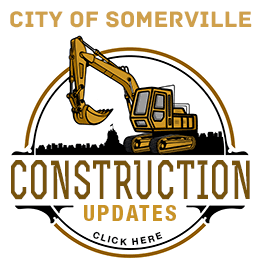Green Line expected to up real-estate values, further gentrification
By George P. Hassett
 After almost two decades of stops and starts, the long awaited Green Line extension through Somerville is coming closer to becoming a reality. The project received its biggest boost to date this month when Governor Deval Patrick fully funded the $600 million venture in his transportation bill. In October he stood in Gilman Square and pledged his administration would meet, and try to beat, the 2014 deadline for the extension.
After almost two decades of stops and starts, the long awaited Green Line extension through Somerville is coming closer to becoming a reality. The project received its biggest boost to date this month when Governor Deval Patrick fully funded the $600 million venture in his transportation bill. In October he stood in Gilman Square and pledged his administration would meet, and try to beat, the 2014 deadline for the extension.
Now Somerville officials, activists and community groups are beginning to prepare for the train’s arrival and the substantial impact it is expected to have on the city.
The expected positive effects of the extension include significant improvements to the city’s economy and environment. However, even some supporters of the extension say the new train stops could further the gentrification seen in the west side of the city, price out longtime residents and transform the city’s diverse neighborhoods into havens for only the very wealthy.
Alderman-at-Large William A. White said the Green Line’s arrival in Somerville could expand the city’s gentrification beyond West Somerville and into other neighborhoods. In the neighborhoods surrounding the train stations – current proposals include Gilman Square, Lowell Street, Ball Square and Union Square — more multi-family homes will likely be converted to condominiums and longtime homeowners will take advantage of an increase in the value of their properties and sell out, he said.
Ward 6 Alderman Rebekah L. Gewirtz, chair of the city’s Housing and Community Development subcommittee, said more should have been done to prevent displacement in West Somerville before the Red Line arrived in 1984 and the city has an opportunity to avoid considerable displacement of longtime residents this time around.
“Affordable housing was overlooked when the Red Line came to Davis Square,” she said. “We have to treat [the Green Line extension] as a positive for the community but also address the need for affordable housing and make sure the city doesn’t become a place where only the very wealthy can afford to live. We don’t want to lose our diversity and we don’t want the people who helped build the city up into what it is today to be pushed out.”
Gewirtz said she supports a campaign launched by the Somerville Community Corporation (SCC) to increase the units set aside as affordable in new Union Square developments from 12.5 percent to 15 percent. The increase would only cut into developers profits by 1 percent, according to SCC.
Mayor Joseph A. Curtatone said he opposes SCC’s proposal for increased affordable housing requirements in new Union Square developments. “We want to create incentives for developers to come to Somerville,” he said.
Curtatone did increase affordable housing requirements for developers in one part of Union Square  from 12.5 percent to 15 percent. He said more relief for affordable housing needs will come from the creation of new housing stock, some priced affordable and some market-rate, along the Green Line corridor. He said linkage fees from commercial development will also go toward the creation of new affordable units.
from 12.5 percent to 15 percent. He said more relief for affordable housing needs will come from the creation of new housing stock, some priced affordable and some market-rate, along the Green Line corridor. He said linkage fees from commercial development will also go toward the creation of new affordable units.
And, he said, there is plenty of time to work out the particulars.
“As we’re moving closer and closer to the reality of the Green Line coming to Somerville we have an opportunity to work with community members and organizations to plan this in an open, transparent way,” he said.
The support Patrick has given the project recently stands in sharp contrast to its history of delay and abandonment.
In 1973 the state first considered extending the Green Line’s route past Lechmere and into Somerville. The proposal languished and was never seriously taken up. In 1990, state officials promised Somerville residents they would complete a Green Line extension through the city and into Medford as a way to offset air pollution caused by the Big Dig. In 2005, the Conservation Law Foundation (CLF) sued the state because it had not taken the necessary steps to complete the project on time. In November 2006, CLF and the state settled and agreed on a binding commitment to complete the project by 2011. That commitment was then pushed back to 2014.















Reader Comments